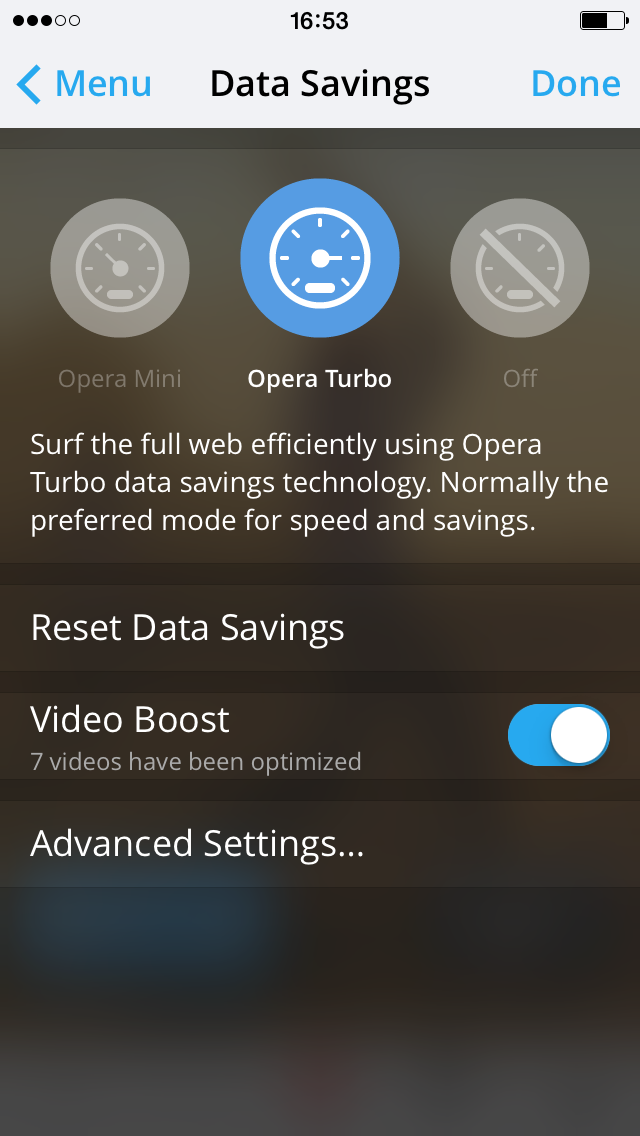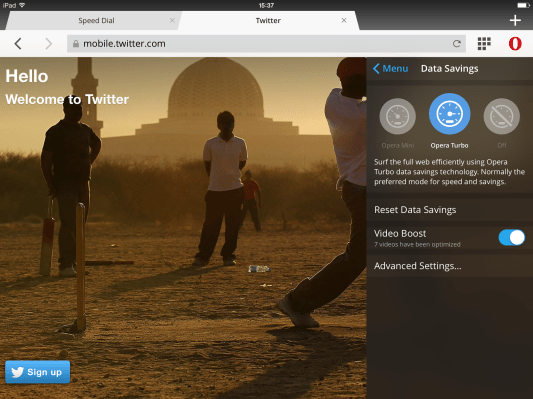Last February, Opera acquired video optimization service Skyfire, and now it is starting to bring some of the service’s features to its mobile browser, starting with Opera Mini 9 for iOS, which is launching today. The feature is also now available as a sneak peek in the Opera for Android beta channel.
As Maciej Kocemba, Opera ’s product manager responsible for Opera Mini, told me earlier this month, the service is meant to both cut down on bandwidth usage when you watch video on a cell connection, but also on simply improving the experience by current down on video buffering. “It’s not just about saving data, but also about making the experience better,” Kocemba told me.
 Opera, of course, has long had a history of building download optimization into its browsers, including things like the Opera Turbo mode, which routes all your browser traffic through the company’s servers, where the company then runs a number of compression algorithms to cut down on the size of a site’s code and images. The video optimization works in the same way. Opera looks at the video you’re watching and then decides how to optimize it.
Opera, of course, has long had a history of building download optimization into its browsers, including things like the Opera Turbo mode, which routes all your browser traffic through the company’s servers, where the company then runs a number of compression algorithms to cut down on the size of a site’s code and images. The video optimization works in the same way. Opera looks at the video you’re watching and then decides how to optimize it.
At times, that may even mean not optimizing it at all because some video services now automatically gear their streams toward mobile devices. A video may also use a codec where optimizations would take too much CPU power and it’s simply not cost-effective for Opera to try optimize it.
It’s worth noting that Opera Mini won’t use the video optimization feature in its “mini” mode. Instead, the team decided to only enable it in the brower’s “turbo” mode for now. That mode saves slightly less data compared to the “mini” mode, but unlike its more aggressive brother, “turbo” mode is better at handling dynamic sites.
The company previously launched a similar video optimization service with Opera Max for Android, its system-wide data compression service. Kocemba tells me Max uses the same servers and has similar capabilities, but it’s slightly different from what the Opera Mini browser now uses. The “turbo” mode in Opera Mini, however, is very similar to Opera Max and because of this, the company decided to only support that mode in its browser for now.
It’s no secret that the Skyfire acquisition didn’t quite work out the way Opera expected. Earlier this year, the company reduced earn-out payments to the Skyfire team by $35 million because sales of the company’s product to carriers underperformed even Skyfire’s own estimates. It’s good to see that the company is now putting its acquisition to good use in its own products, however, and maybe others like Google and Apple will follow suit at some point and offer similar optimization features, too.
